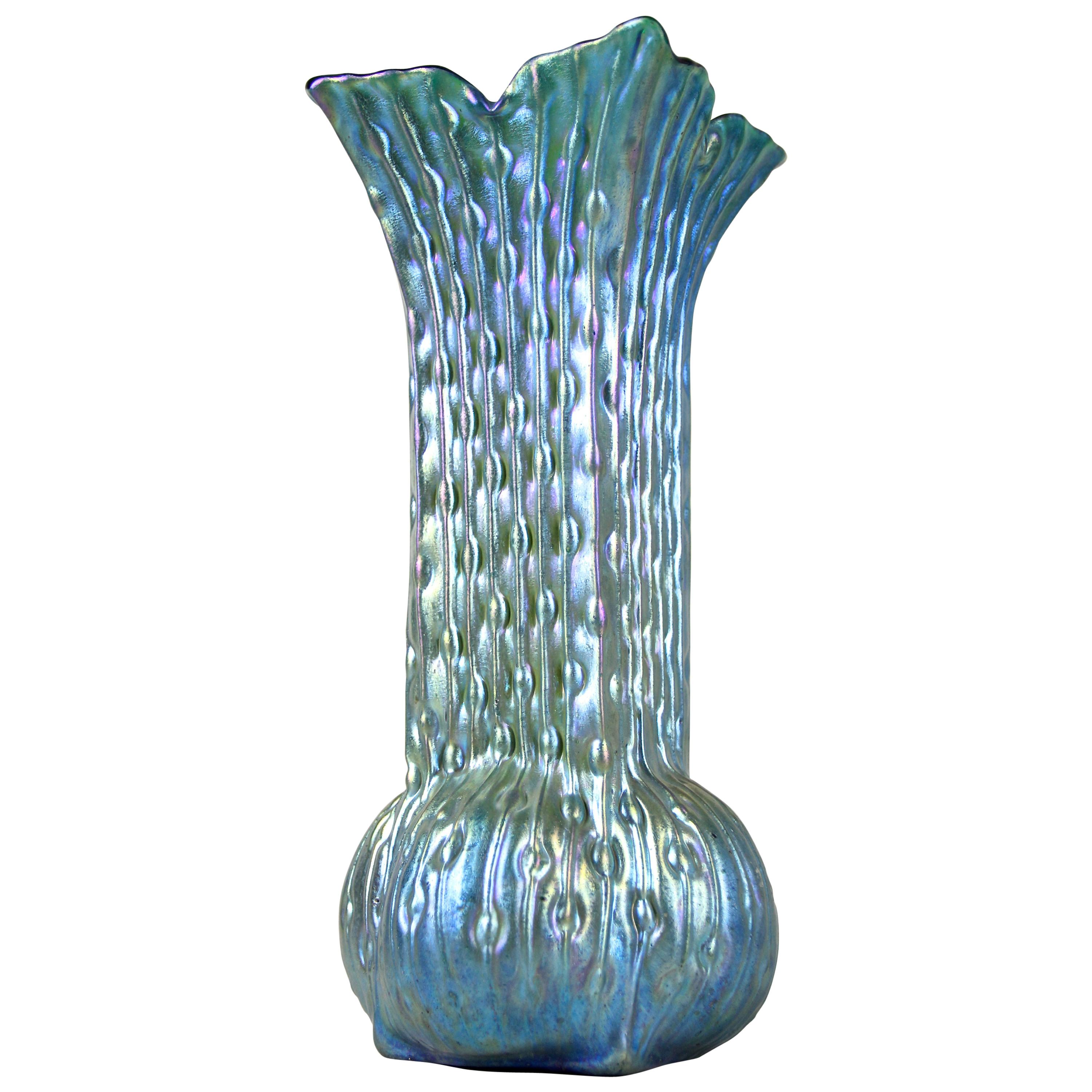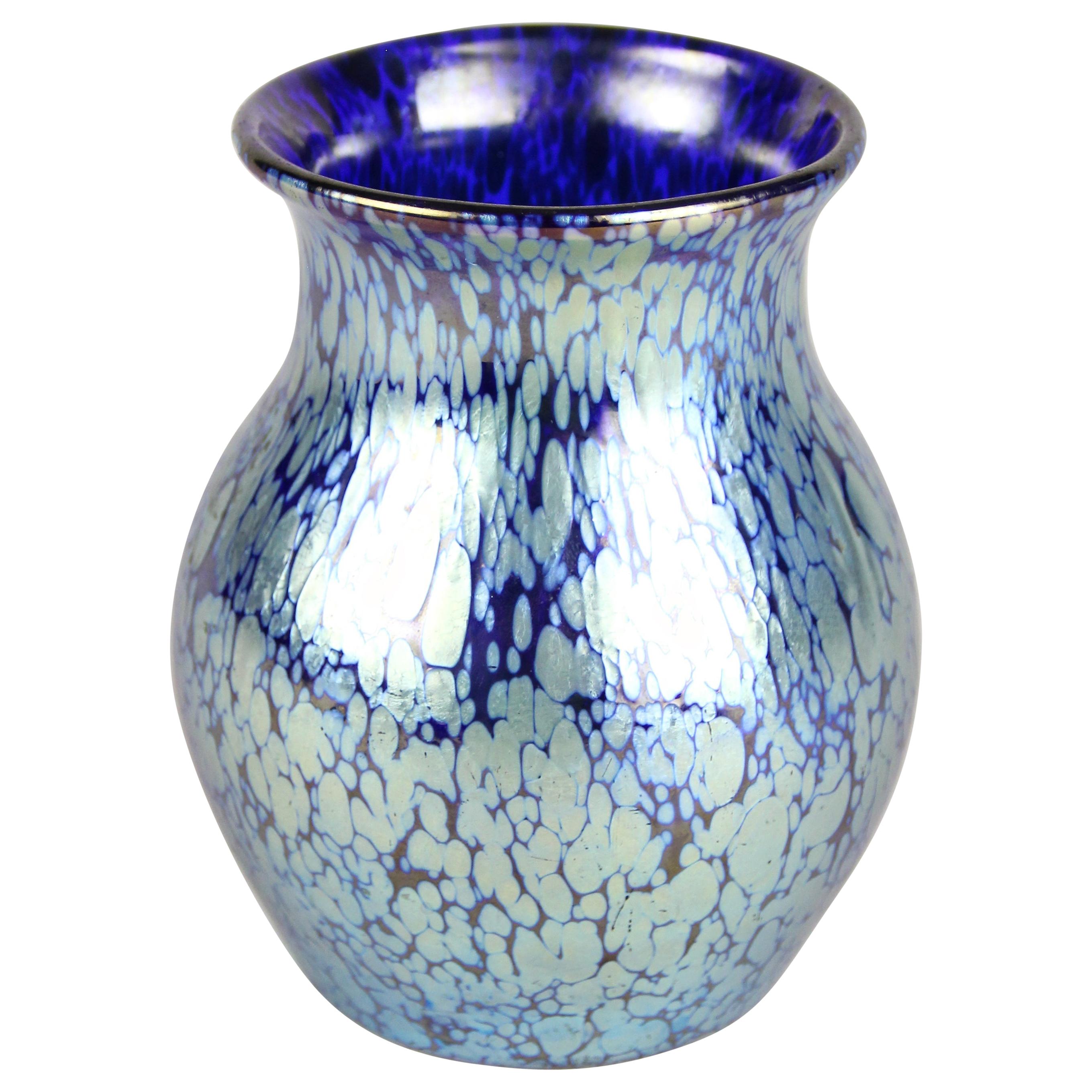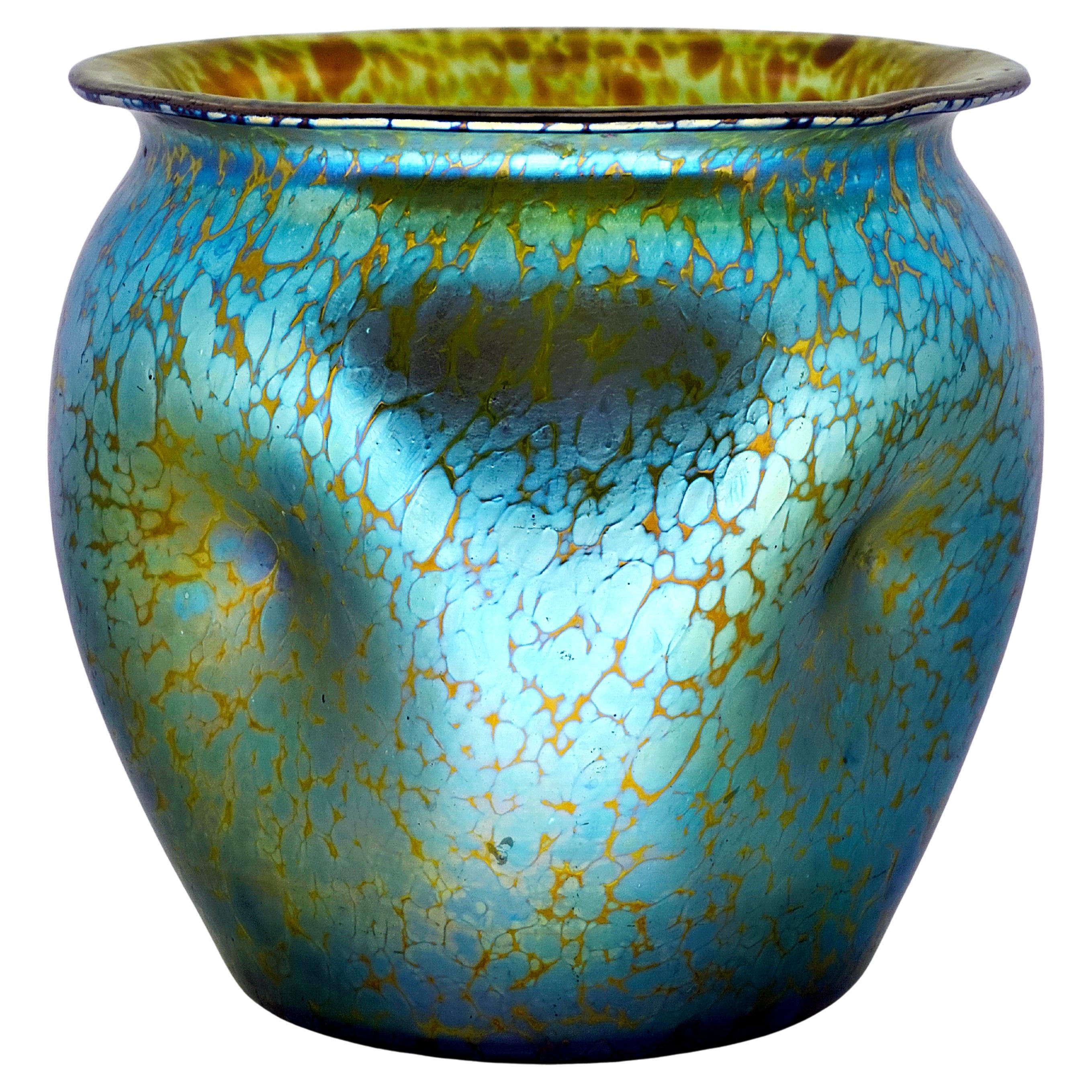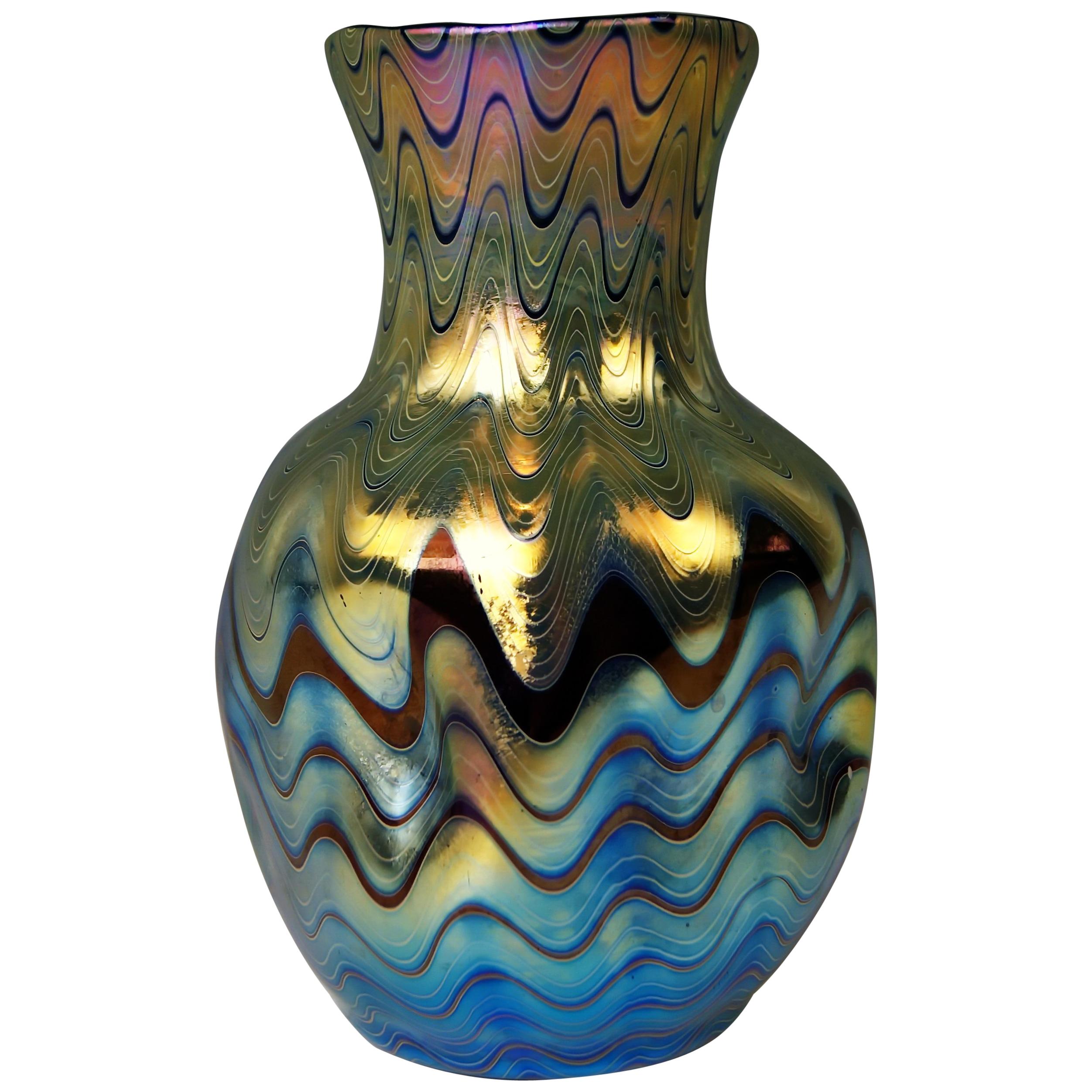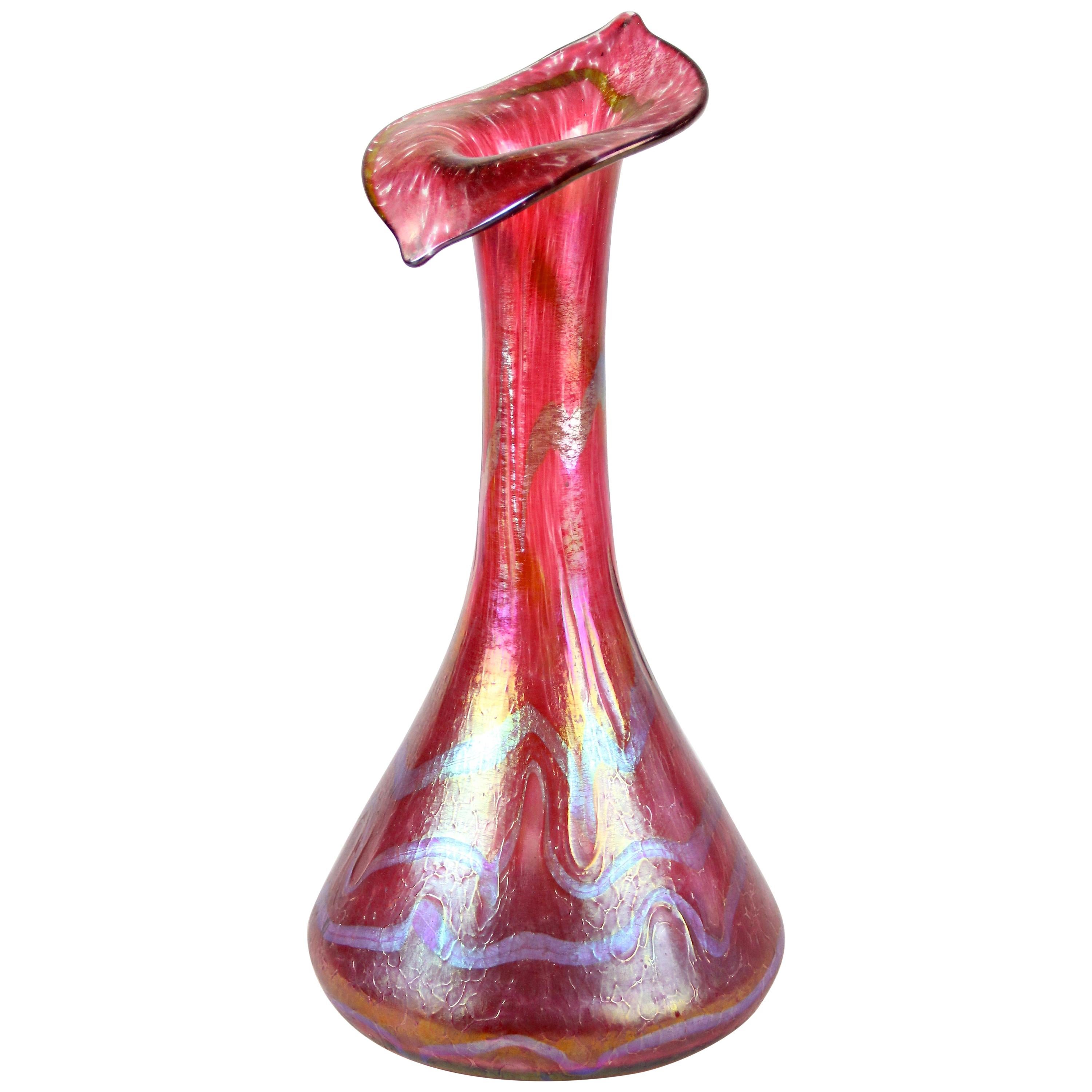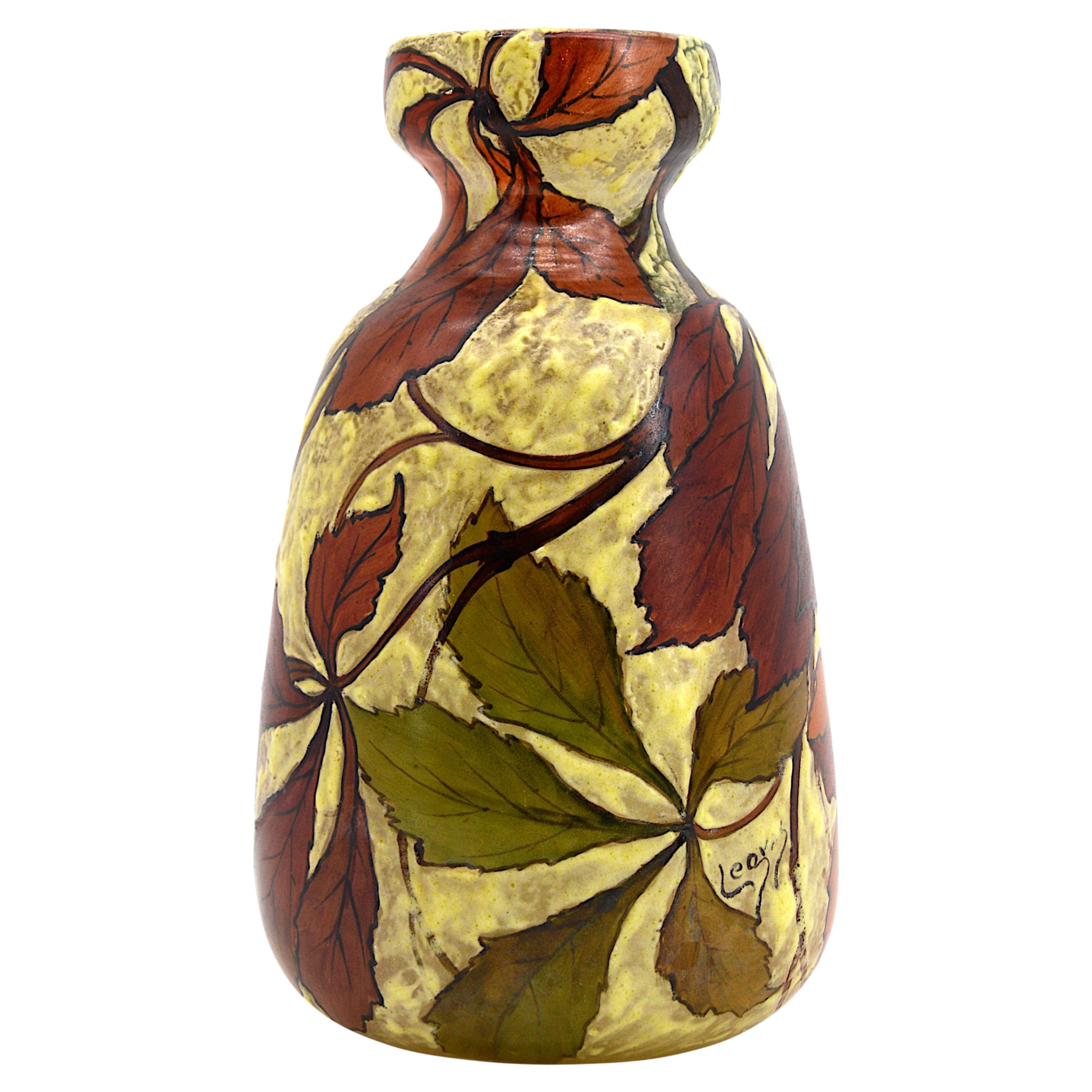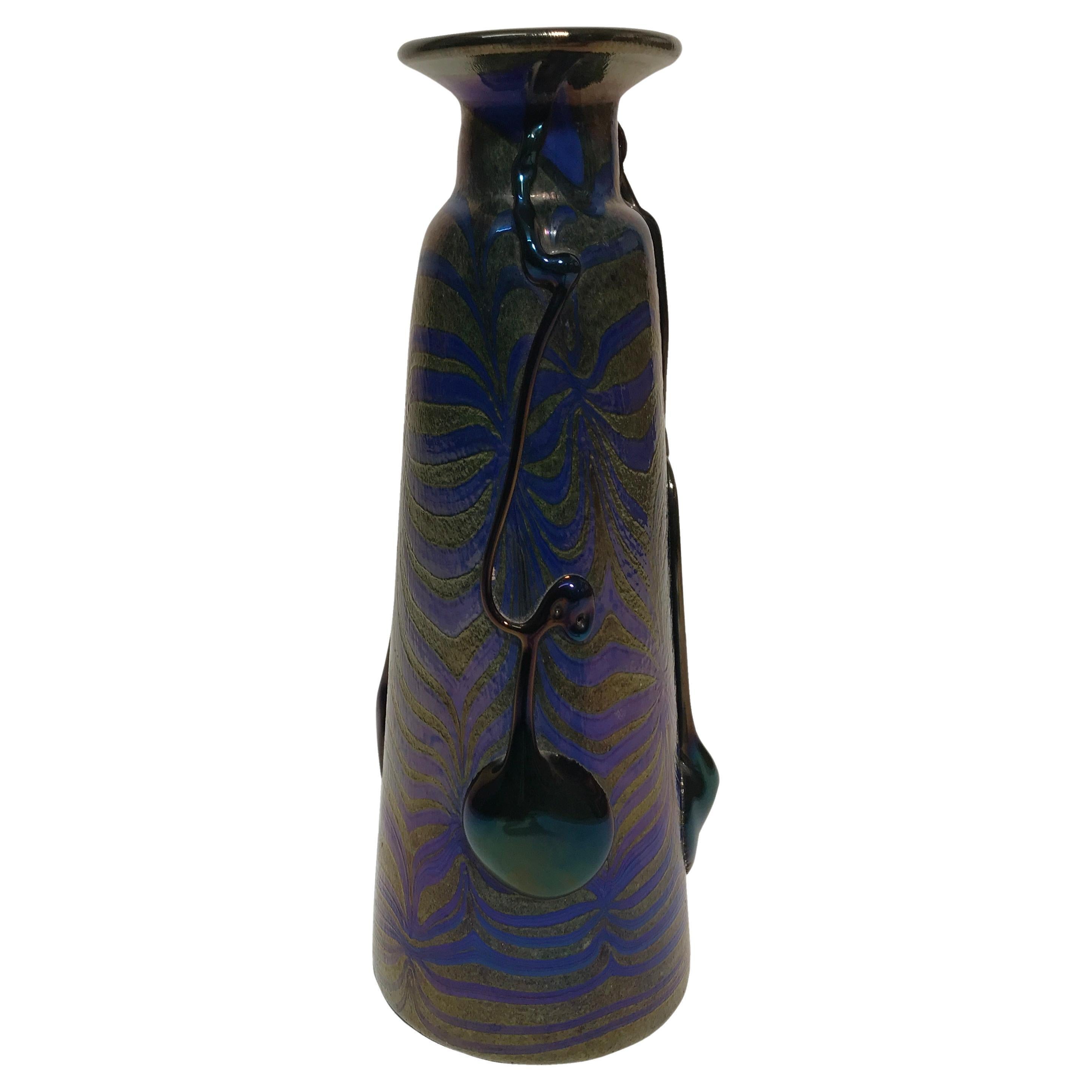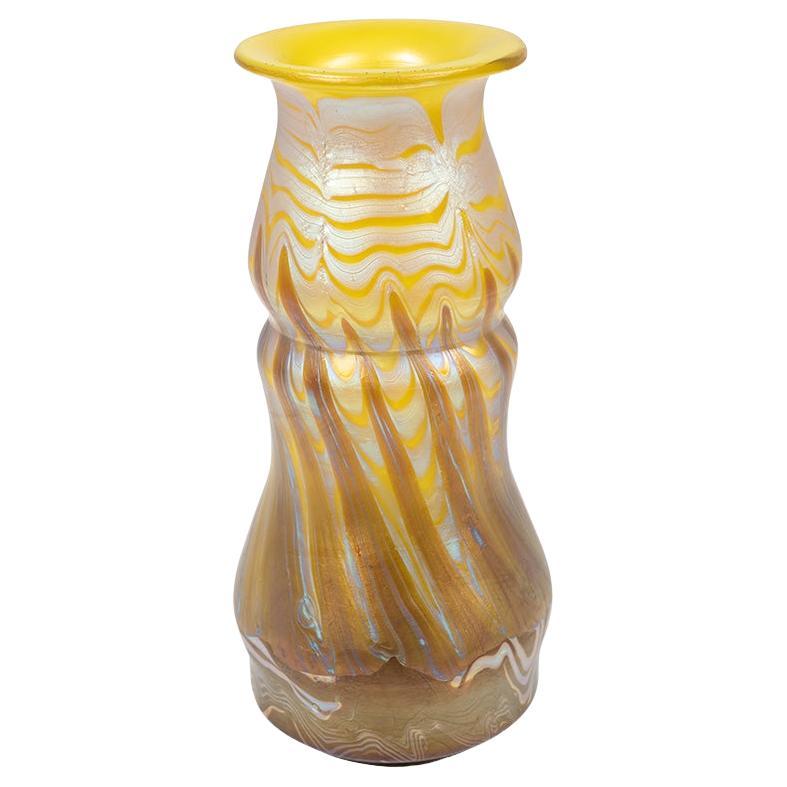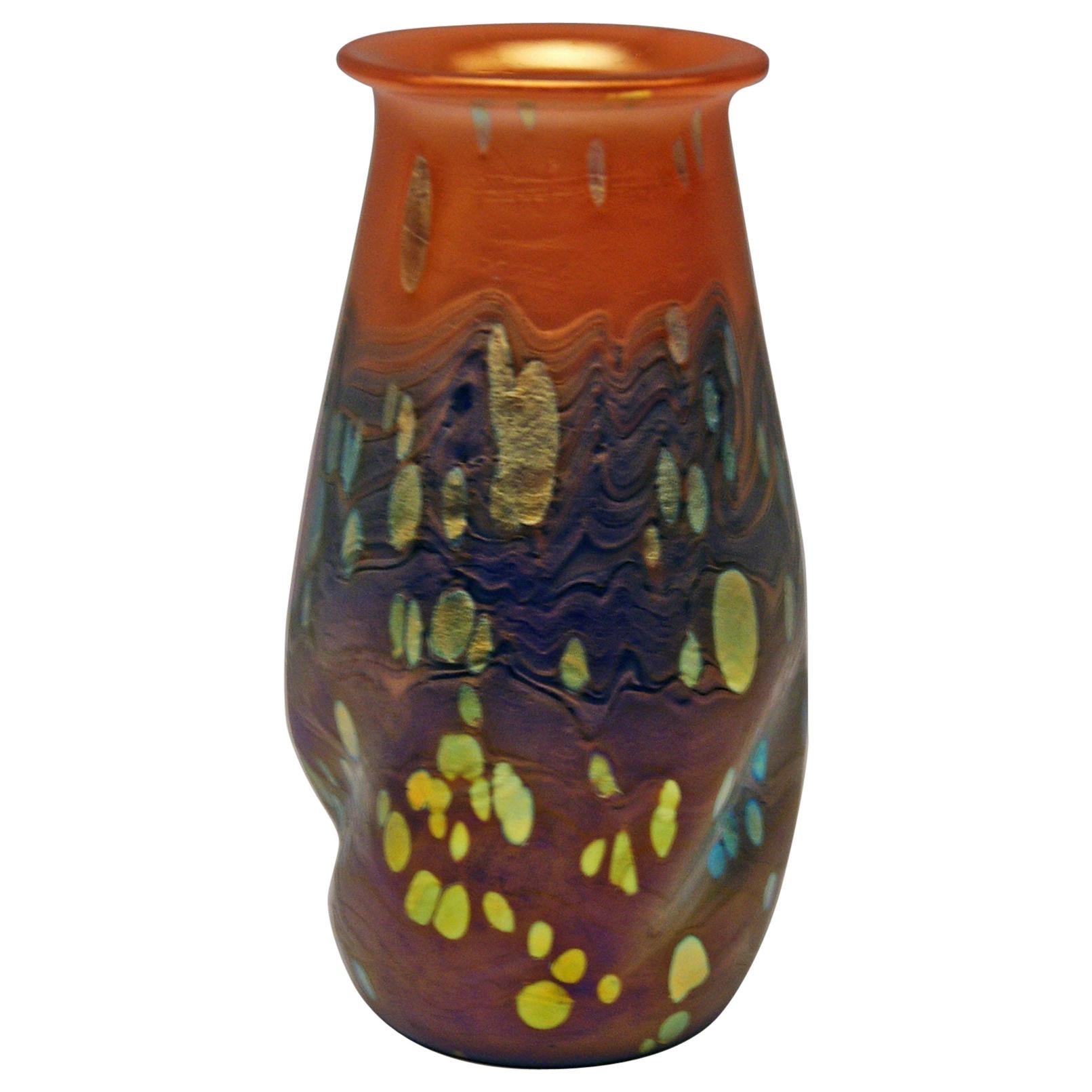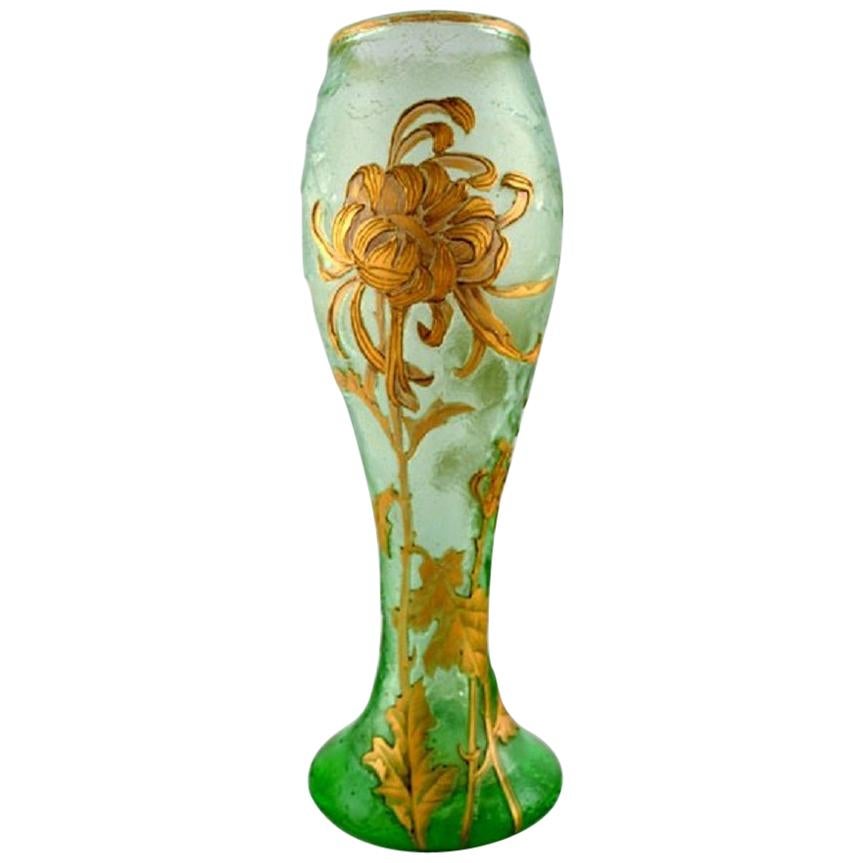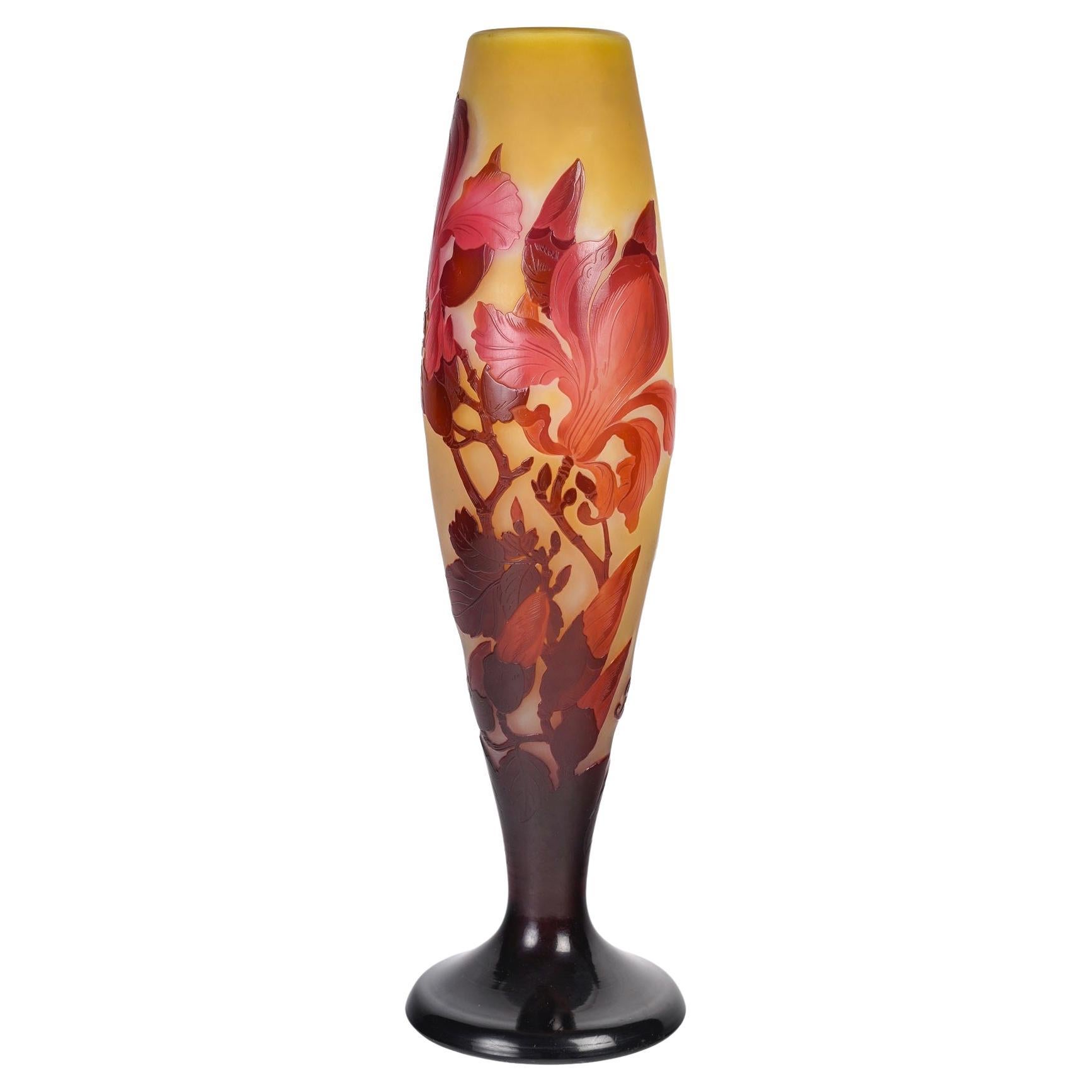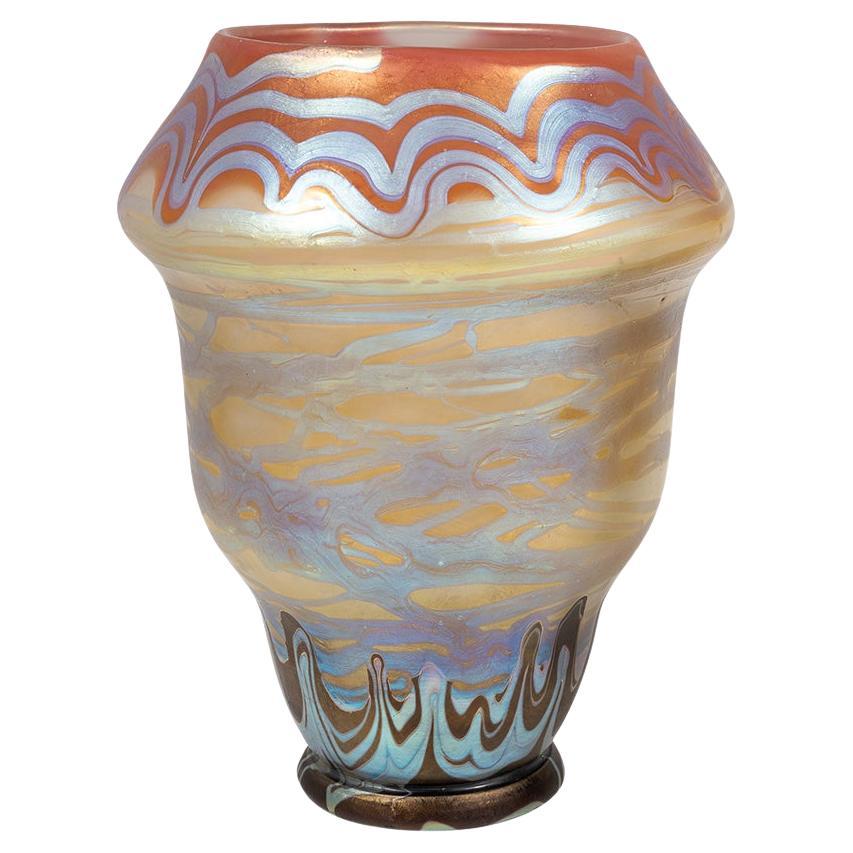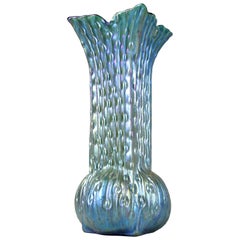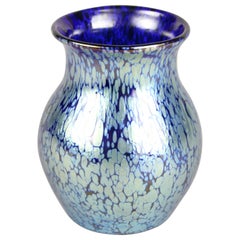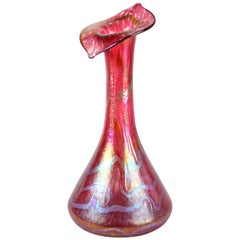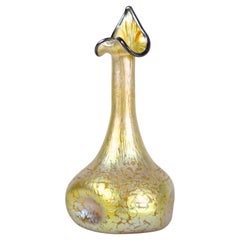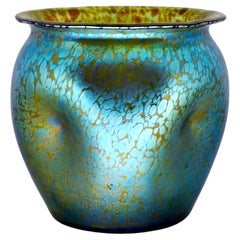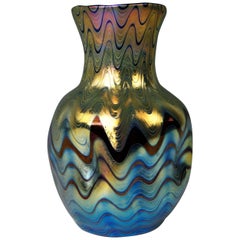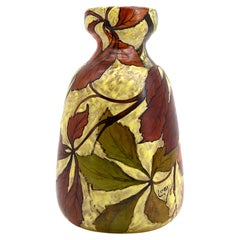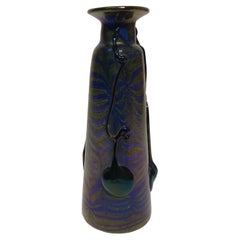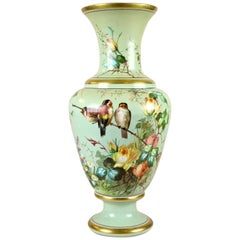
Large Art Nouveau Amphora Glass Vase with Enamel Paintings, Bohemia, circa 1900
View Similar Items
Want more images or videos?
Request additional images or videos from the seller
1 of 17
Large Art Nouveau Amphora Glass Vase with Enamel Paintings, Bohemia, circa 1900
About the Item
- Dimensions:Height: 20.6 in (52.33 cm)Diameter: 9.8 in (24.9 cm)
- Style:Art Nouveau (Of the Period)
- Materials and Techniques:
- Place of Origin:
- Period:
- Date of Manufacture:circa 1900
- Condition:Wear consistent with age and use. * some old patina can be found on different parts of the surface.
- Seller Location:Lichtenberg, AT
- Reference Number:Seller: GV-BO11stDibs: LU1553220233882
About the Seller
5.0
Platinum Seller
Premium sellers with a 4.7+ rating and 24-hour response times
Established in 2015
1stDibs seller since 2015
372 sales on 1stDibs
Authenticity Guarantee
In the unlikely event there’s an issue with an item’s authenticity, contact us within 1 year for a full refund. DetailsMoney-Back Guarantee
If your item is not as described, is damaged in transit, or does not arrive, contact us within 7 days for a full refund. Details24-Hour Cancellation
You have a 24-hour grace period in which to reconsider your purchase, with no questions asked.Vetted Professional Sellers
Our world-class sellers must adhere to strict standards for service and quality, maintaining the integrity of our listings.Price-Match Guarantee
If you find that a seller listed the same item for a lower price elsewhere, we’ll match it.Trusted Global Delivery
Our best-in-class carrier network provides specialized shipping options worldwide, including custom delivery.More From This Seller
View AllIriscident Art Nouveau Glass Vase by Loetz Witwe, Bohemia, circa 1902
By Johann Lötz Witwe
Located in Lichtenberg, AT
Exceptional Art Nouveau glass vase by Loetz Witwe Klostermuehle, Bohemia, circa 1902. This absolute rare, iriscident Loetz vase shows an unusual shaped body with a beautiful green gl...
Category
Early 20th Century Czech Art Nouveau Glass
Materials
Blown Glass
Loetz Witwe Art Nouveau Glass Vase Decor Cobalt Papillon, Bohemia, circa 1903
By Johann Lötz Witwe
Located in Lichtenberg, AT
Very decorative Loetz Witwe glass vase in decoration Cobalt Papillon from the Art Nouveau period in Bohemia, circa 1903. This gorgeous vase from the workshops in Klostermuehle shows ...
Category
Early 20th Century Czech Art Nouveau Vases
Materials
Blown Glass
Fritz Heckert "Jack In The Pulpit" Glass Vase Art Nouveau, Bohemia, circa 1901
By Fritz Heckert
Located in Lichtenberg, AT
Rare example of a large red "Jack In The Pulpit" glass vase from Fritz Heckert around 1901. This unique piece of Art Nouveau glass art convinces with its beautiful shaped body and u...
Category
Early 20th Century Czech Art Nouveau Glass
Materials
Blown Glass
Loetz Witwe Glass Vase Decor Candia Papillon, Bohemia, circa 1898
By Johann Lötz Witwe
Located in Lichtenberg, AT
Stunning Loetz Witwe glass vase decor "Candia Papillon" out of Bohemia, circa 1898. This very rare version of the famous rose water sprinkler vase impresse...
Category
Antique Late 19th Century Czech Art Nouveau Glass
Materials
Blown Glass
Loetz Witwe Glass Vase Crete Phaenomen 6893, Bohemia, circa 1898
By Johann Lötz Witwe
Located in Lichtenberg, AT
Fantastic Loetz Witwe glass vase with the decoration Crete Phaenomen 6893 made in the famous workshops in Klostermuehle/ Bohemia, circa 1898. This rare exe...
Category
Antique Late 19th Century Czech Art Nouveau Vases
Materials
Blown Glass
Loetz Witwe Glass Vase Phaenomen Genre 6893 Green, Bohemia, circa 1899
By Johann Lötz Witwe
Located in Lichtenberg, AT
Fantastic Loetz Witwe glass vase out of the famous workshops in Klostermuehle/ Bohemia, circa 1899. The beautifully shaped glass vase was artful...
Category
Antique Late 19th Century Czech Art Nouveau Vases
Materials
Blown Glass
You May Also Like
Loetz Art Nouveau Vase, Decor Creta Papillon, Bohemia, Austria-Hungary, 1900
By Loetz Glass
Located in Vienna, AT
Finest Bohemian Art Nouveau Glass Vase:
Mould blown bulbous vase on a flat stand with four deep dents in the side wall, flared mouth above the wide neck, ground and polished pontil o...
Category
Antique Early 1900s Austrian Art Nouveau Glass
Materials
Glass
Vase Loetz Widow Klostermuehle Bohemia Art Nouveau Phaenomen Genre 6893 c.1900
By Johann Lötz Witwe
Located in Vienna, AT
Vase Loetz (Lötz) Widow Klostermuehle Bohemia Art Nouveau
Made by Loetz, Klostermuehle (Bohemia), circa 1899-1900
Decor: RUBY PHAENOMEN GENRE 6893
It is a most remarkable as wel...
Category
Antique 1890s Austrian Art Nouveau Glass
Materials
Glass
Legras French Art Nouveau Enameled Vase, Early 1900s
By François-Théodore Legras
Located in Saint-Amans-des-Cots, FR
Rare French Art Nouveau vase by François-Théodore Legras, France, Early 1900s. Very very rare vase with an uncommon shape showing a decor richly enamelled with chestnut leaves. A mus...
Category
Antique Early 1900s French Art Nouveau Glass
Materials
Art Glass
Vase Loetz , Style : Art Nouveau , Bohemia, circa 1900
By Loetz Glass
Located in Ciudad Autónoma Buenos Aires, C
Loetz
The glass factory, originally founded in 1836 by Johann Baptist Eisner, was taken over. Loetz was the premier Bohemian glass works during this period. It was located in Klostermühle, near Rejštejn in the Sušice district in South-West Bohemia, which belonged to the Austro-Hungarian Empire until 1918. Susanna Loetz, widow of Glass entrepreneur Johann Loetz in 1852. She renamed the company "Glasfabrik Johann Loetz Witwe", a name that was retained until all activities were stopped in 1947. In 1879 it passed to Max Ritter von Spaun. Under his guidance, together with director Eduard Prochaska, the glassworks flourished as never before and enjoyed its most successful period. Von Spaun and Prochaska concentrated on the development of innovative glass types and new production techniques. Their first successful speciality was a glass type simulating semiprecious stones. It is often called "Marmoriertes Glas" ("marbled glass"). The range contained Onyx (red/brown), Karneol (red/pink) and later Malachit (green). It was introduced in the second half of the 1880's. From the same period dates the Octopus glass, of which the decor resembles the tentacles of a cephalopod. The production of Marmorier-tes Glas was resumed in 1906, in different colours like yellow and white. Octopus, 1885-1890, 1885-1890, unknown, an Malachit, 1885-1890, unknown, The master glass-blowers of Klostermühle had already carried out experiments with iridescence in the first half of the 1890's, and they produced the Olympia, a classically inspired olive green type, in 1896. Similar, in variants of creta green, bronce or Olympia and averse to any redundant decoration was the Glatt decor. It highly contrasted with the more elaborate finishes of that time, but it constitutes a part of the production with a deep sense for taste and quality. Most of the pieces shown in the "Glatt" decors were manufactured for Max Emmanuel in London.
The glatt decor remained in use for many years. The Chiné decor had thin glass threads spun around the body in irregular patterns. It is not to be confused with the type of glass that was produced by Kralik. Loetz "Chiné" came in clear, opal, green and pink, Kralik "Chiné" in dark purple. The logical sequel to Chiné was the Pampas decor, green or cobalt blue, in which the threads almost disappeared in the surface, with iridised parts in between. Around the same time the dotted Papillon decor was introduced. The beautiful silver spots were employed on a wide array of models and quite effective on the gooseneck (water sprinkler) and sea shell...
Category
Antique Early 1900s Austrian Art Nouveau Glass
Materials
Art Glass
Signed Glass Vase Loetz Decoration circa 1900 Art Nouveau Jugendstil Bohemia
By Loetz Glass
Located in Klosterneuburg, AT
Bohemian glass vase, manufactured by Johann Loetz Witwe, PG 356 decoration, ca. 1900, signed, Paris World Exhibition, orange, brown, ochre, silver, white, Bohemia, Viennese Art Nouve...
Category
Early 20th Century Austrian Jugendstil Glass
Materials
Glass
Vase Loetz Widow Klostermuehle Bohemia Art Nouveau New Red Cytisus, circa 1902
By Loetz Glass
Located in Vienna, AT
Vase Loetz (Lötz) Widow Klostermuehle Bohemia Art Nouveau
Made by Loetz, Klostermuehle (Bohemia), circa 1902
Decor: Neurot (= New Red) Cytisus
It is a nicest Loetz Art Nouve...
Category
Antique Early 1900s Austrian Art Nouveau Glass
Materials
Glass
Recently Viewed
View AllMore Ways To Browse
Vase With Bird Art Nouveau
Amphora Czech
Amphora Czech Vase
Green Glass Amphora
Submerged Murano Glass
West German Fat Lava
Deep Blue Glass Vase
Mirror Vases
Multi Color Vases
White Ceramic Vase Pair
White Vase With Pink Flowers
Clear Bubble Glass Vase
Green Milk Glass
Iris Gold
Large Green Aquamarine
Metal Round Vase
Parisian Vase
Daum Nancy Art Nouveau Glass Vase
